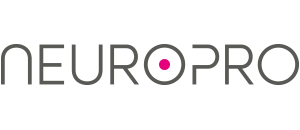The exhibition took place outside of the auditorium, in parallel with the speaker presentations and panel discussions. The exhibition provided a platform to demonstrate the translation of ground-breaking science into novel solutions for societal and economic challenges. The exhibition area included companies and organisations that are furthering brain research and neurotechnology, including start-ups, established companies, service providers and research organisations.
Exhibitors' profile

Artinis Medical Systems is a Dutch innovative company producing near infrared spectroscopy equipment (NIRS) to measure both brain and muscle tissue oxygenation levels, with affordable and fit to purpose solutions. Artinis produces flexible, versatile and easily upgradeable laboratory equipment like the Oxymon MkIII. Measurements can be taken from 1 of up to over a 100 channels to cover the whole head. Artinis also produces wireless NIRS equipment like the OctaMon, ideally suited for wireless measurements on the (pre)frontal brain. This will work perfectly for dual tasking, hyperscanning or BCI purposes.
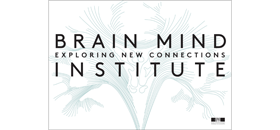
The mission of the Brain Mind Institute (BMI) at the School of Life Sciences at EPFL is to understand the fundamental principles of brain function in health and disease, by using and developing unique experimental, theoretical, technological and computational approaches. The scientific challenge addressed by the BMI consists in connecting different levels of analysis of brain activity, such that cognitive functions can be understood as a manifestation of specific brain processes; specific brain processes as emerging from the collective activity of thousands of cells and synapses; synaptic and neuronal activity in turn as emerging properties of the biophysical and molecular mechanisms of cellular compartments.

Demiurge Technologies AG is a cutting-edge Swiss artificial intelligence startup developing Deep Learning 2.0 for data-scarce mobile AI applications on earth and in space.
Demiurge's more brain-inspired next-generation deep neural networks are capable of one-shot learning and self-supervised learning. Demiurge’s mobile robot operating system could enable ultra-safe fully autonomous cars on earth and low-cost exploratory robots in space.

Founded in 1998 at the first Forum of European Neuroscience, the Federation of European Neuroscience Societies (FENS) is the main organisation for neuroscience in Europe. FENS currently represents 43 European national and single discipline neuroscience societies with close to 23,000 member scientists from 33 European countries. FENS promotes neuroscience research to policy-makers, funding bodies and the general public, both regionally and internationally. Hence, FENS promotes excellence in neuroscience research and facilitates the exchange and networking between neuroscientists within the European Research Area and beyond.

The FENS-KAVLI Network of Excellence is a network of 30 young European neuroscientists who represent the most talented researchers among their peers.
Our vision is to shape the future of neuroscience by putting young researchers in the driver’s seat. We aim to improve neuroscience in Europe through providing opportunities for young scientists, influencing science policy and facilitating the exchange between science and society.

Innovation is ubiquitous, but fast declining within corporations. Go Beyond Investing accelerate it through to future strategic and financial returns.
Go Beyond Investing is the leader in corporate venturing for open research & innovation and venture management. We explore new opportunities, technologies and business ideas, develop partnerships with research labs, start-ups or innovative companies, and enable corporate investments within start-ups.
Operating in multiple European and US locations through Go Beyond Network, our team is comprised of seasoned business angels, entrepreneurs and managers.

g.Nautilus is a wireless biosignal acquisition system. Its design is completely different from all other devices and it sets a new standard of usability. The tiny and lightweight device is attached to the EEG cap to avoid cable movements and to allow completely free movements. In combination with g.tec’s active electrode technology, you will get top quality EEG recordings from 32/16/8 channels within a few minutes. Just put on the cap, add a bit of gel in each electrode, and start your recording. A dry electrode version based on the worldwide proven g.SAHARA electrodes is also available. g.Nautilus has a built-in lithium ion battery, which allows for continuous recordings of up to 10 hours. The battery is recharged via a contactless charging pad within 2-3 hours. The device is completely waterproof, which allows easy cleaning of the electrodes together with the cap, with no need to disconnect or disassemble anything! g.Nautilus transmits data via the 2.4 GHz band with an indoor operating range of about 10 m. The input sensitivity of all channels is adjustable and the sampling rate can be set to 250 Hz or 500 Hz. An electrode impedance check can be performed automatically via software, and a 3-axis acceleration sensor provides online head movement information along with the biosignals.
The base station for g.Nautilus is just a small receiver box connected to the PC via USB. 8 digital trigger lines can be connected to the base station to record event timing information. g.Nautilus comes with a 32-channel EEG setup (10/20 system), but subsets with different electrode arrangements are available on request.
recoveriX is the system can recognise the intention of a movement and then provides feedback via functional electrical muscle stimulation as well as via visual reality feedback with an avatar from the patients’ perspective.
mindBEAGLE is a consciousness assessment and communication for patients with disorder of consciousness (DOC). The system objectively shows whether the patient understands basic instructions and shows fluctuations of cognitive functions. It also allows for a basic Yes/No-communication with a DOC or coma patient.
cortiQ is a rapid functional mapping of the cortex using the electrocorticogram (ECoG). cortiQ is a break-through in neurosurgical technology and can be used in epilepsy, brain damage and tumour treatments. It was developed to identify functional brain regions in real-time with invasive electrodes. Using that data, the system constructs and continuously updates a Mental Activity Profile (MAP) in order to optimise surgery procedures.

Hitachi High-Technologies Corporation and Hitachi Kokusai Yagi Solutions Inc. (HYS) have jointly developed new wearable optical topography system “WOT-HS”, which enables measurement of brain activity at the scalp. It has been developed as an expansion of “Wearable Optical Topography System” series, which visualises human brain activity by near infrared light.
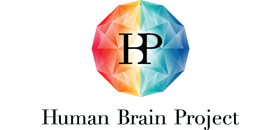
The Human Brain Project (HBP) is an EU-funded Future and Emerging Technologies (FET) Flagship Initiative to create and operate an ICT-based research infrastructure, to help advance neuroscience, medicine and computing. The 10-year project began in 2013 and involves leading scientists at more than 100 universities and research centres across Europe but also in the USA, China and Japan. The HBP is centred on six ICT research platforms: Neuroinformatics, Brain Simulation, High Performance Analytics and Computing, Medical Informatics, Neuromorphic Computing and Neurorobotics. It also conducts related research and theoretical studies on brain structure and function, and looks at the ethical and societal implications of HBP’s work.

Imec performs world-leading research in nanoelectronics. Imec leverages its scientific knowledge with the innovative power of its global partnerships in ICT, healthcare and energy.
Imec’s highly sensitive, intelligent, miniaturised, ultra-low power, wearable sensors enable comfortable, continuous, reliable and long-term monitoring and management of health in ambulatory conditions and daily-life activities.
Imec develops advanced wearable technologies, wireless health platforms and offer full system design for healthcare, wellness, and lifestyle applications. Proven cases are a.o. the Health wristband, ECG health patch, EEG headset, biomedical IC’s .
The demo application shown at the event will assess emotional and cognitive state of a person in near-real time and render it in a Virtual Reality gaming like scenario.

KB Medical has developed the AQrate System, a robotic assistant for neuro surgery. We believe that by combining imaging, navigation, robotics, instruments and implants into an integrated solution, the industry will be able to provide new techniques, increased benefits, greater adoption of minimally-invasive approaches in the field of neuro surgery, and a proprietary integrated full solution to protect low-entry barrier / high margin disposable business. We see KB Medical's role to be central in this process, as the robot is the obliged connection between upstream imaging/navigation and downstream instrument/implants.
KB Medical has developed and fully industrialized a first version of the product, has completed its first clinical trial, expecting CE mark by May 2016, and has initiated FDA process.
Features of the device include a unique intuitive haptic steering of the robot for intra-operating capability, compatibility with existing equipment, full integration in the standard surgical flow, and a highly evolutive software and hardware platform enabling the development of new application and of robot-enabled surgical techniques, instruments and implants.
Medical utility include time saving and smaller access while providing high accuracy. The robot has the accuracy required for brain surgery, the strength for orthopedic surgery, and the workspace for spinal surgery. The initial application is for spinal surgery, and will be expanded depending on strategic partnerships to come.
The company is currently looking for a Series B of CHF 2-3M and strategic partnership / M&A for co-development and commercialization.

The Commission for Technology and Innovation (CTI) is the federal agency responsible for encouraging innovation through the provision of funding, consulting and networks. It also works to ensure that scientific research contributes to economic growth. CTI supports innovation within the Swiss economy for the Swiss economy.
CTI offers companies a wide range of continuing education and training options as well as coaching. It also provides funding for R&D projects conducted by companies and higher education institutions working as partners. In addition, CTI networks and platforms enable optimal knowledge and technology transfer. CTI support accelerates the process of transforming research findings into marketable products and services. It also helps companies to improve their innovation capacities, achieve greater added value and create new, high-value jobs.
NeuroPro is a Swiss medical research, design and commercialisation company that brings together cutting-edge mobile computing and innovative signal analysis methodologies to create user-friendly, real-time solutions for consumers, researchers and healthcare professionals.
NeuroPro’s mission is to harness the benefits of the digital and mobile revolutions and apply them to the problems of neuroscience to radically improve the way we acquire, understand and utilise brain signal data. NeuroPro’s unique technologies leverage proprietary systems and patents furthered by strategic partnerships with prominent research and technology providers.
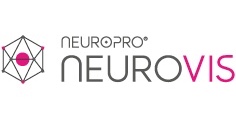
NeuroVIS is software which combines EEG signal viewing and analysis with 3D visualisation of brain activity. NeuroVis provides a platform for capturing complex data and mapping information in highly visual and engaging formats. NeuroVIS has been developed by NeuroPro for the visualisation and analysis of EEG and ECG signals across multiple neuroscience and medical fields.
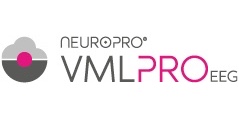
The VMLpro (Virtual Mobile Laboratory) system is at the core of many NeuroPro technologies. The system pairs the power and flexibility of cloud computing with the ease of use of mobile and internet technologies, providing neuroscience researchers and practitioners with data-focused application platforms such as VMLproEEG. These applications are built around three core features:
- On-demand: real-time scalability – storage and computational resources size up dynamically to meet users’ intensive processing requirements in a use-it-when-you-need-it scheme that cuts processing cost and time significantly.
- Collaboration: users, irrespective of geographical location, choose to share access to data, analysis, and research insights within a virtual environment that sets focus on the scientific conversation and minimises distractions due to data logistics.
- Extensibility: researchers design and implement their custom analysis workflows in an ad-hoc manner, thereby controlling costs and risks inherent to rigid data analysis procedures.
VMLpro systems leverage the latest developments in cloud computing technology to provide highly scalable and secure environments that foster efficient collaboration on patient diagnosis and patient monitoring or on clinical trials irrespective of geographical location.
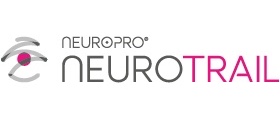
NeuroTrail is a wireless EEG headset designed to simplify the acquisition of EEG making it possible for non-experts to record EEG quickly and easily. Created to adapt to individual head shapes, NeuroTrail is modular, ergonomically-designed, and allows real-time capture of EEG and motion sensor data. The headset allows flexible placement of one to eight EEG channels with state of the art non-invasive dry electrodes. Recorded data are transmitted wirelessly in real-time using Bluetooth or Bluetooth-LE and can be used for a wide range of clinical research (e.g. epilepsy prediction) and non-clinical (e.g. gaming) applications. NeuroTrail integrates with our associated iOS applications and SDK for instant viewing of raw captured data and with the NeuroPro cloud enabling in-depth analysis of EEG recordings using patented algorithms and effective visualisations.
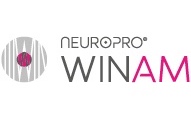
WiNAM is built on the simple hypothesis that our brains function rhythmically. When brain rhythms are disrupted, the brain malfunctions. The latter state could be a seizure. WiNAM is a highly intelligent algorithm that enables the real-time detection and prediction of epileptic seizures. It applies multi-dimensional pattern detection on EEG signals in search of out-of-rhythm elapses in time, frequency, and special domains, and uses smart machine learning to distinguish harmony from discord.
The ultimate objective of WiNAM is to be able to automatically predict seizures. This prediction would bring countless life-changing benefits to epilepsy patients ranging from preemptive warning to real-time prevention treatment.

Created in 2010 and funded by the Swiss National Science Foundation, Synapsy brings together researchers and clinicians, in the fields of neuroscience and psychiatry to improve the diagnosis and treatment of mental disorders through a better understanding of the mechanisms contributing to their origin and development.
Our efforts are organised around two main research axes: - To identify genes involved in the vulnerability to mental disorders by exploring biological factors influencing development, from conception to the first few years of life; and - To explore environmental factors associated with life experiences, likely to leave traces in the brain.
Key brain regions are mapped out, synapses and neurons therein examined, and connections between the latter elements investigated. Advanced technologies are used by researchers. Genomic sequencing techniques allow a glimpse into an individual’s DNA. Brain imaging provides windows into active brains in a non-invasive manner. Laboratory techniques allow scientists to observe and measure the activation of single neurons or a neuronal circuit. All these measurements lead to a better understanding, providing novel insights into brain disorders.
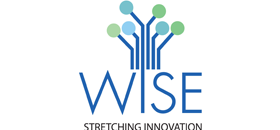
WISE Srl (Wiringless Implantable Stretchable Electronics - wiseneuro.com) is a Milan and Berlin based medical device company developing a genuinely new generation of implantable electrodes for neuromodulation and neuromonitoring.
WISE’s electrodes are highly biocompatible, foldable, stretchable, minimally invasive and cheaper to produce than existing products and will overcome the major limitations of today’s technology. They will allow improved treatment of patients that are already profiting from neuromodulation, while at the same time expanding the use of neuromodulation to fields and clinical indications in which the complex technical demands cannot be met by the current technology.
The electrodes are produced through a proprietary innovative technology, called Supersonic Cluster Beam Implantation (SCBI), which allows the metallisation of stretchable polymers. SCBI consists in embedding metal nanoparticles inside a preformed polymer base in order to form a conductive metal-polymer skin on its surface.

W Science is a private company that provides resources, technology and leadership to support initiatives that enable the integration and packaging of science with information technologies that advance personal healthcare and personal lifestyles.
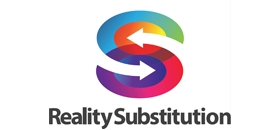
The RealiSM platform captures reality and allows the re-experience through immersive devices, either unchanged or altered. In this context a ‘reality’ is the combination of several streams of information that can be recorded and re-assembled to form a complex life experience. RealiSM is designed and engineered in conjunction with neuroscience research and combines existing recording and virtual reality technologies alongside bespoke software to bridge the capture and the re-experiencing of reality.

The Sonic Womb research project is a multi-disciplinary collaboration between scientists, engineers and sound artists, that seeks to re-create the experience of hearing in utero in an acoustically optimised enclosed space, the Orrb. The project aims to raise awareness of the need to improve the acoustic quality of the environment of the premature baby in neo-natal incubators to prevent auditory stress.

The mission of the Wyss Center is to accelerate the development of neurotechnology for human benefit.
The Center is an independent, not for profit organisation that provides the resources, facilities and expertise required to transform creative neuroscience research into clinical solutions that will improve the lives of people with nervous system disorders. We support innovative neurotechnology projects from anywhere in the world that fit our mission and can make full use of our capabilities and resources. Our goal is to ensure that projects advance until they are sufficiently mature to attract industry partnerships, venture funding, or other mechanisms that will make them broadly available to society.
Keep in touch
Subscribe for the latest announcements and events from The Brain Forum.

